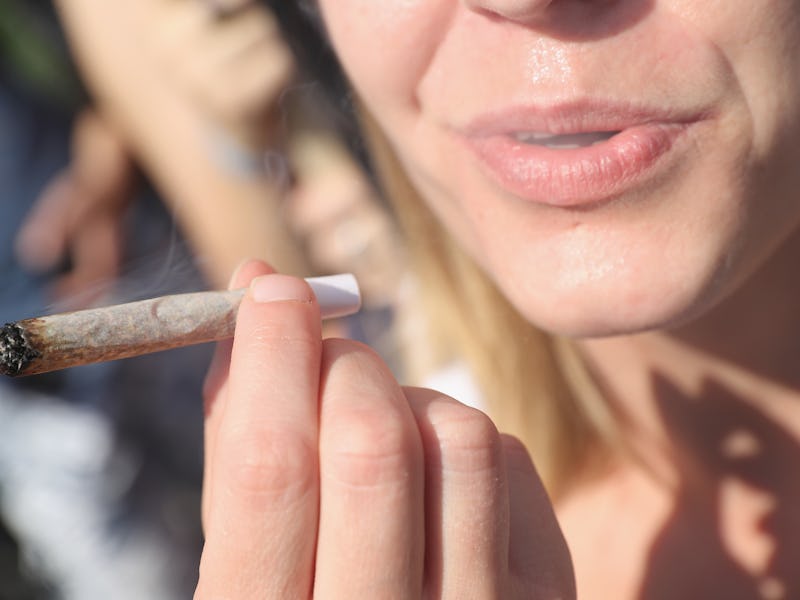More Americans Than Ever Think Pot Is Safe
Scientists think they're mistaken.

In a study published Wednesday in The Lancet Psychiatry, researchers from the U.S. National Institute on Drug Abuse report that more American adults than ever perceive marijuana as safe — even though the drug isn’t exactly harmless. Our shifting attitudes toward the drug are especially concerning as strong weed — and its scarily potent synthetic counterparts — are becoming easier to get.
Over half a million American adults were surveyed for this study, which revealed that the proportion of people who saw toking up once or twice a week as harmful dropped from 50.4 percent to 33.3 percent between 2002 and 2014. During the same 12-year period, the percent of the population that used pot at least once in a year rose from 10.4 percent to 13.3 percent. Coincidence? The authors think not — and it’s got them worried.
Marijuana use has increased, together with the general perception that it's safe to use.
While the study’s authors don’t condemn the drug outright, they call for users to educate themselves about the risks involved with marijuana use. “Perceived risk of marijuana use is associated with high frequency of use suggesting the potential value for modifying risk perceptions of marijuana use in adults through effective education and prevention messages,” said study author Dr. Wilson M. Compton of NIDA, in a release.
The paper doesn’t really outline what those risks are, but they’ve been discussed elsewhere: Edible weed “overdoses” have landed Colorado marijuana tourists in emergency rooms, it’s still unclear whether driving while high is especially dangerous, and experts still aren’t sure whether there’s a link between marijuana use and schizophrenia. Pro-pot activists are likely to call foul on the study — part of the drug’s increasing acceptance is, after all, due to its increasingly benign, even healthy image — but the truth is, there’s still a lot we don’t know about weed, and it probably won’t hurt to take NIDA’s advice and educate ourselves.
To further complicate matters, crazy-dangerous street drugs known as spice, flakka, and K2 are increasingly being sold on the streets as synthetic marijuana, even though they’ve been condemned by the CDC as straight-up poison. The drugs — which consist of cannabis sprayed with extremely potent psychoactive chemicals — have been responsible for a rash of scary, zombie-like overdoses across the U.S., and their use has increased over the past year: In the first four months of 2015 alone, the number of synthetic marijuana-related calls to United States poison centers increased by 330 percent. While the Lancet study doesn’t say whether perceptions about the safety of synthetic cannabis have changed — the researchers only studied survey data through 2014, before spice became an especially huge problem — but their call for increased awareness about weed (and weed-related) risks still applies.
Of course, the call for increased education about marijuana applies to the scientists themselves, too. The only way to know how risky pot use really is involves learning more about its harmful consequences. Unfortunately, with weed still classified as a Schedule I drug, research on the effects of its use will continue to be slow, leaving both policymakers and users — perhaps dangerously — in the dark.